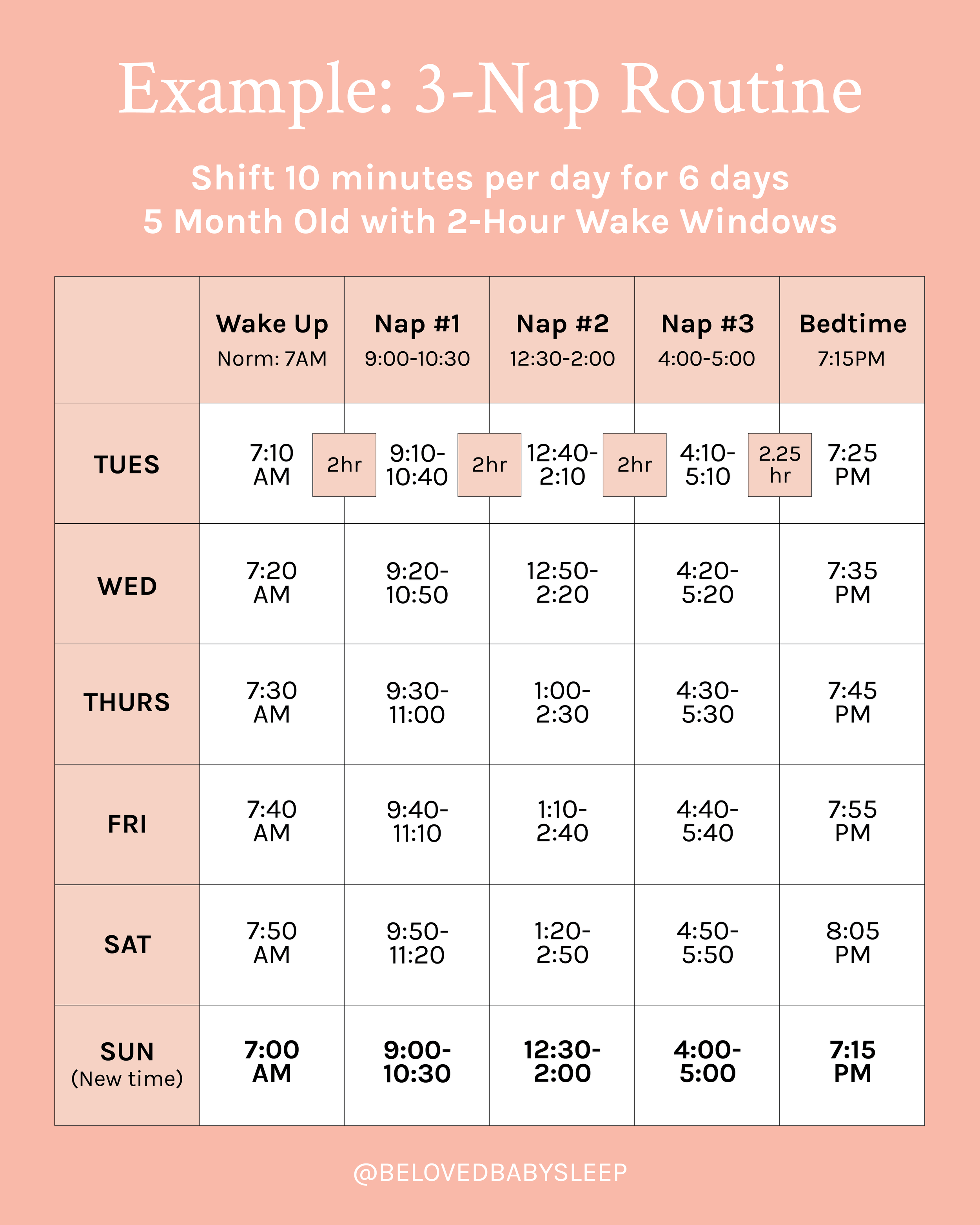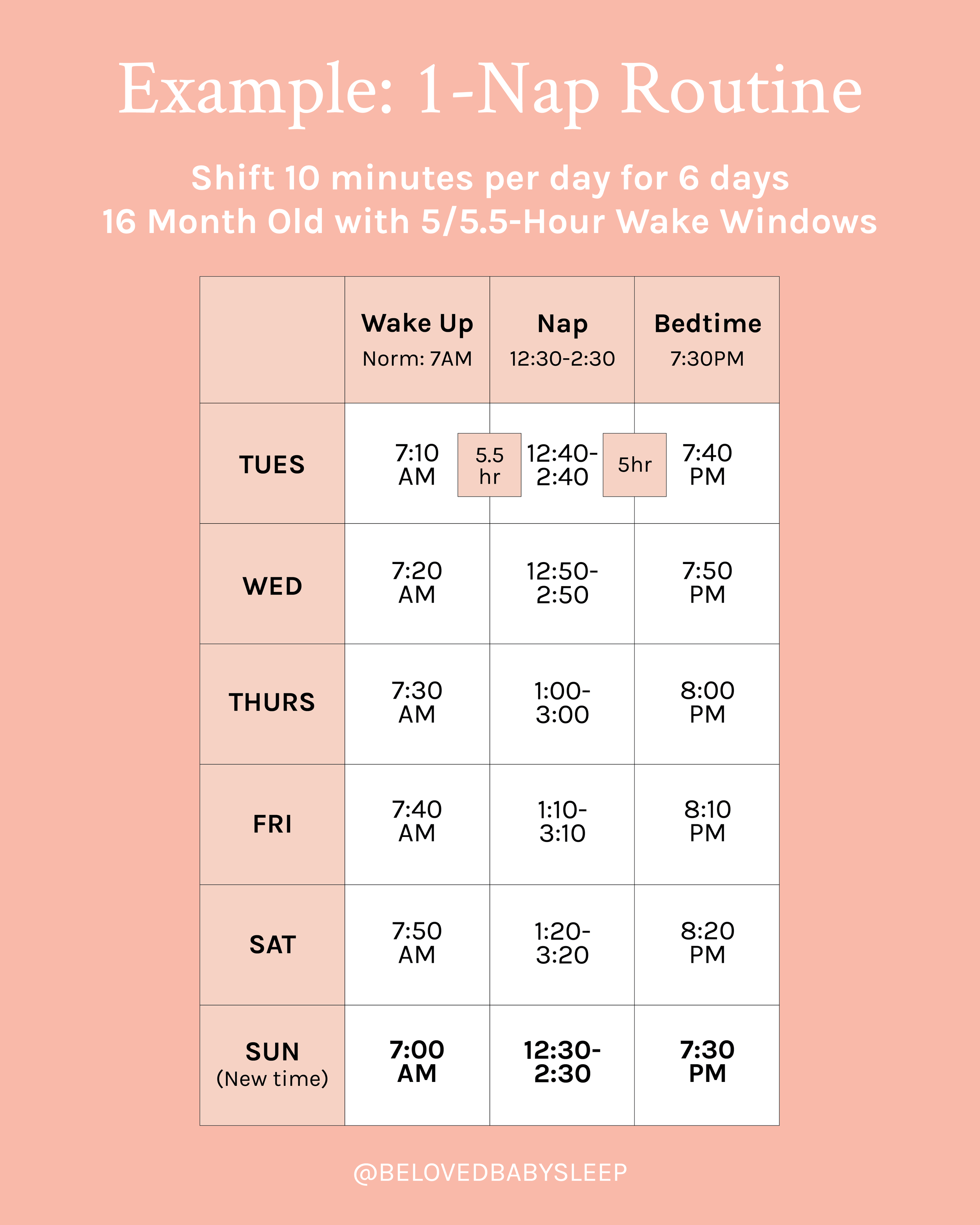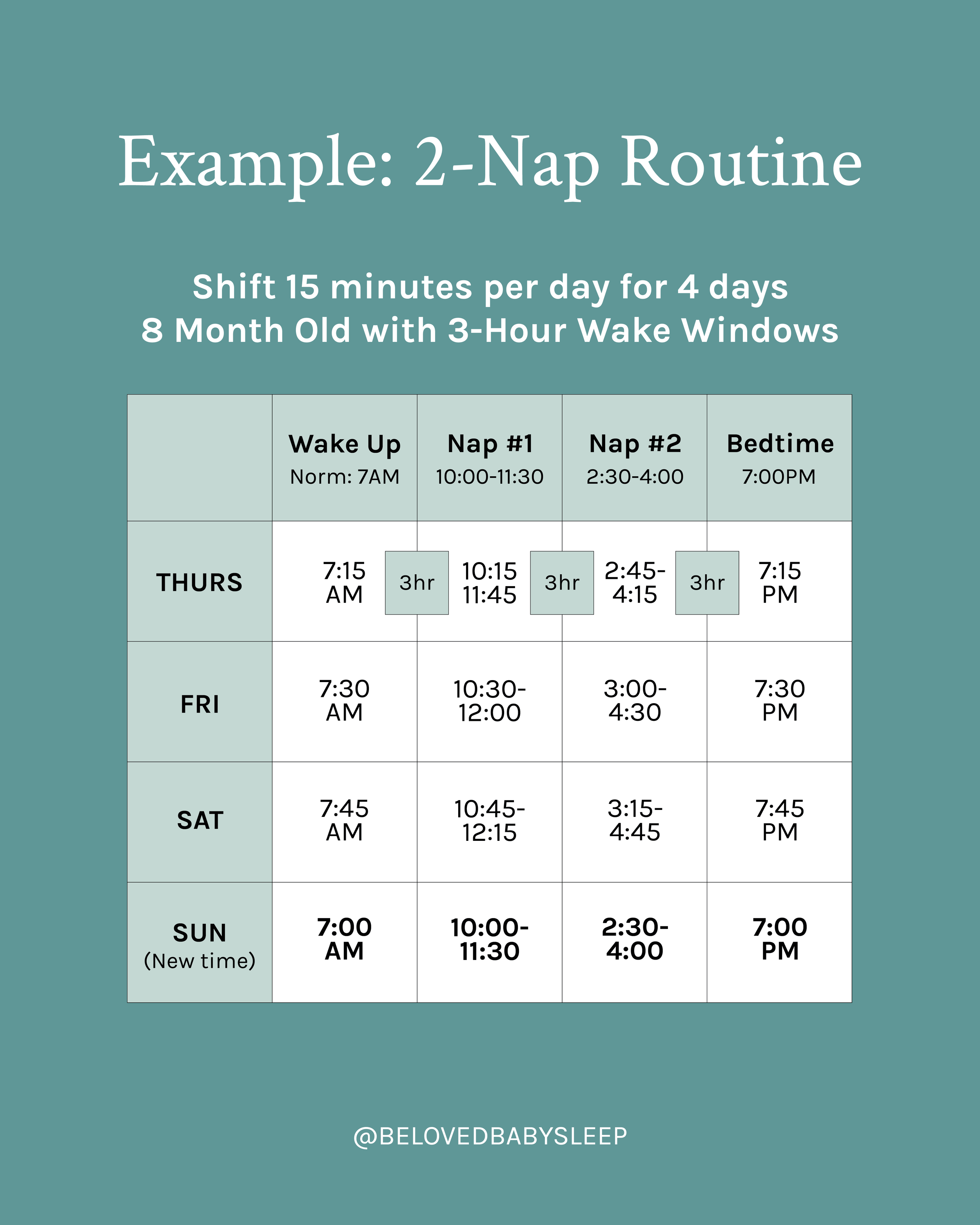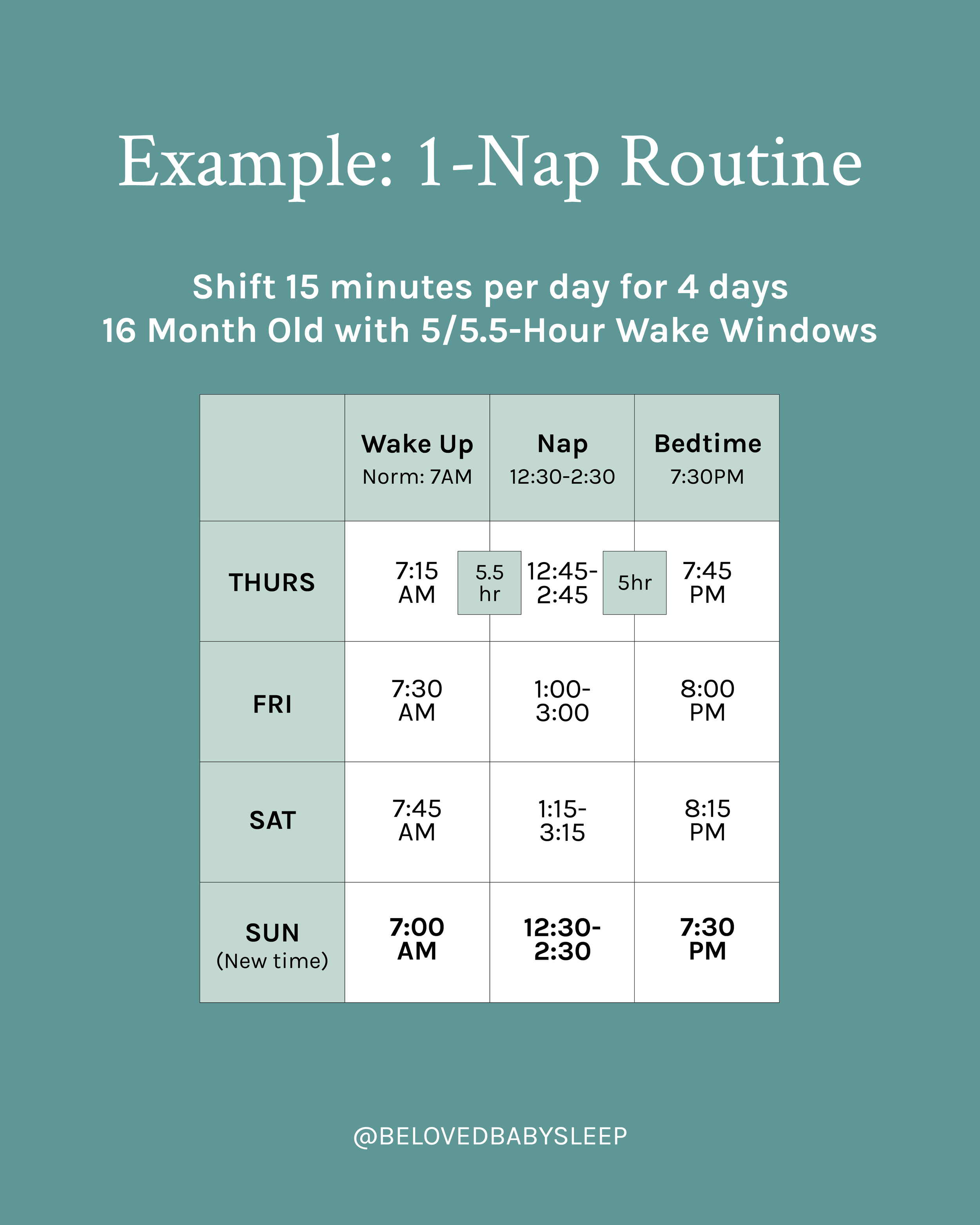Falling Back: Daylight Savings Time with Kids
Maybe you’re not like me and don’t consider Daylight Savings Time to be the bane of your existence, but chances are that if you’re a parent and have worked hard to create a consistent routine with your little one(s), DST threatens to wreck it all.
Fortunately, we have options to help you prepare for the change OR get back on track if things fall apart after the fact. Here are several different ways to help your child adjust to Daylight Savings Time, recommended for children 5 months of age and older.
What if your baby is younger than 5 months? Keep reading!
How can we prepare to “fall back”?
In the autumn in the United States, we will “fall back” by turning our clocks back one hour. At 2am on a Sunday morning, clocks will reset to 1am. So when it reads 6am on the clock, it will feel like 7am; when it reads 7am, it will feel like 8am, etc.
For children who typically wake before or around the time their parents get them up, it might be a big adjustment to expect them to sleep or make them wait for an additional hour. Similarly, when they’re ready to go to bed in the evening and have another hour before the clock says it’s bedtime, it can be a struggle!
We have four options:
Shift your routine 10 minutes per day starting 6 days prior to the time change.
Shift your routine 15 minutes per day starting 4 days prior to the time change.
Shift your entire routine an hour earlier in the winter months.
Wake them based on the time on the clock and push through in the days following.
1. Shift your routine 10 minutes per day.
Starting on the Tuesday PRIOR to the time change on Sunday, you will get your child up 10 minutes later than normal, begin their nap(s) 10 minutes later than normal, and move bedtime 10 minutes later than normal. The next day, you’ll begin 20 minutes later than normal; the next, 30 minutes. By the time Sunday arrives, you will have shifted your entire routine by 60 minutes total.
Here are some examples of this (click on each to zoom in).
Download a printable FREE 6-Day Daylight Savings Time Planner to track your child’s sleep during this adjustment.
2. Shift your routine 15 minutes per day.
Starting the Thursday PRIOR to the time change on Sunday, you will get your child up 15 minutes later than normal, begin their nap(s) 15 minutes later than normal, and move bedtime 15 minutes later than normal. The next day, you’ll begin 30 minutes later than normal; the next, 45 minutes. The following day (Sunday), you have shifted your entire routine by 60 minutes total.
Here are some examples of this (click on each to zoom in).
Download a printable FREE 4-Day Daylight Savings Time Planner to track your child’s sleep during this adjustment.
3. Your entire routine will shift an hour earlier in the winter months.
You can choose to simply move your child’s entire routine back by an hour during the winter months, and when Daylight Savings Time comes again in the spring (in the United States), the routine will shift again. Instead of your child getting up at 7am, they will get up at 6am. And instead of going to bed at 8pm, they will go to bed at 7pm. This works for some families, and it’s a perfectly functional work-around.
However, If your child normally gets up at 6am, their new get-up time will be 5am, and that is often not reasonable for most families. If it works for yours, go for it!
4. Get your child up based on the time on the clock.
Instead of shifting your routine gradually or not changing anything at all, you will go by the clock only. You will get them out of their crib/bed based on the time on the clock, even if they woke much earlier than that. Through the day, you will push through to their typically scheduled nap times and bedtime, getting as close as possible to their norm.
In theory, after a few days up to a week, their internal clocks will begin to adjust to the new normal, and they will wake closer to their typical time on the clock. For some children, this works beautifully (especially older toddlers and preschoolers who tend to be a bit more flexible when it comes to extending time awake). For others, this can be a big struggle and lead to overtiredness, displaying as nap time struggles, fussiness at bedtime, night wakings, or early morning wakings.
If your little one is having a hard time after the time change, we may need to help ease them into the new norm. We can apply a gradual shift (10-15 minutes) over the course of the week following, slowly shifting their routine later.
What about children younger than 5 months?
For babies who are still taking 4 naps a day, sometimes stretching them a full hour, even incrementally, can be a struggle for them. What I have found to work the best is simply to add another catnap on the Sunday afternoon of the time change, and then offering bedtime at their normal time (on the clock). It helps them to achieve their typical amount of night sleep, and you can begin afresh the next day, adjusting as needed—perhaps moving a nap 15-20 minutes earlier than normal or allowing one nap to go a tad longer (up to 2 hours).
Most babies this age tend to adjust rather well to this time change as they’re typically sleepier overall!
Is there anything else we can do to help with the adjustment?
Absolutely! I recommend plenty of outdoor time and play/activity the Sunday of the time change and the days following, as this helps reorient the body to the new normal. Light and darkness play a big role in setting our internal body clocks, and being outside in the light tells our brains when it’s time to be awake, and when it starts to get dark, our brains shift into wind-down mode. This is particularly helpful for children who struggle to make the shift after the time change.
As always, when it comes to sleep, it really helps to start with a foundation of healthy sleep habits. A child who is well-rested is far more likely to adjust to a shift than a child whose sleep is hit or miss. The best way to achieve this is to give children the gift of independent sleep. If this area is a struggle for your child, consider making a change either before or after the time change—take a look at my services to see what will fit your needs best, or schedule a free 15-minute call where I’ll help you pinpoint what you need. I am happy to help!
Please note that I am not a medical professional, and this blog post is not meant to serve as medical advice, a diagnosis, or any form of treatment. If you have any questions or concerns, please discuss them with your child’s pediatrician.







